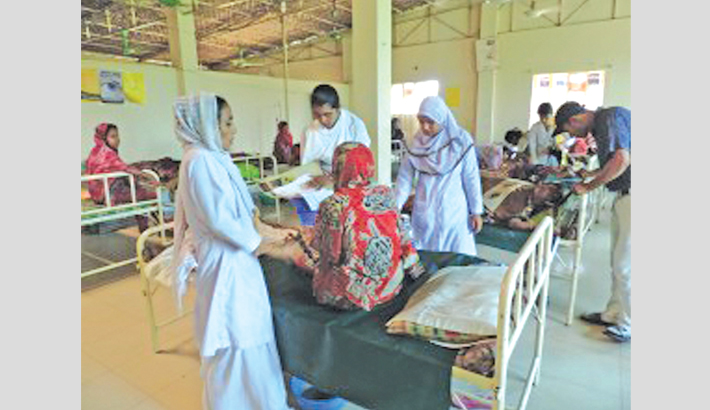
Bangladesh is considered one of the poorest countries in the world. It is also in the top ten population wise with around 168 million people. Over half of its people, 60%, live below the poverty line and 70% live in rural communities. Since its independence in 1971, its healthcare system has had a significant rise in quality over the years and has often been praised for the steps taken to improve the health of its people. They also have the goal of eventually providing Universal Health Coverage. Even with being an extremely poor country, it has a stable economy and declining rates of poverty. Despite its successes, there are still many problems with its healthcare system.
The healthcare system in Bangladesh relies on four key components: the government, private sector, nongovernmental organizations (NGOs) and donor agencies. Bangladesh’s public health system is organized into three tiers. Primary health care, Upazila Health Complexes (UHC) at the sub-district level. Union Health and Family Welfare Centers (UHFWC) at the Union (collection of few villages) level. Community Clinics (CC) at the village level. These are backed by the District Hospitals providing secondary level care and the tertiary hospitals of various kind in large urban centers. Bangladesh has a good infrastructure for delivering primary health care services. However, due to inadequate logistics the potential of this infrastructure has never been realized. To make up for the limitations of their public services and the inability to reach everyone in the country, the healthcare system in Bangladesh is very flexible when it comes to the private sector and NGOs.

There are a lot of issues facing healthcare in Bangladesh. One being the high amount of communicable diseases like tuberculosis and hepatitis A/B. There are also many tropical diseases like dengue and malaria. Though there has been a push for providing childhood immunizations by NGOs and donor organizations like WHO which has lowered the number of cases. Other issues are; limited public facilities, lack of access, lack of supplies, misuse of resources, lack of local level planning and many others. One of the biggest problems is the lack of medical workers. There is a shortage of about 800,000 healthcare workers. Bangladesh also has one of the worst nurse to doctor ratios with 1 nurse for every 3 doctors when those numbers should be reversed.
Public healthcare is highly subsidized by the government, with nominal payments required from patients, especially for the outpatient care. Health insurance, both national and private, is practically nonexistent. Health financing is underfunded with only 2.64% of the GDP spent on health, which is the lowest in the south Asia region. Health financial coverage is so sparse that about 9% of households face catastrophic health payment, 5.6% face impoverishment and 7% face distress financing. With its extremely high out-of-pocket costs, Bangladesh is among the highest in the world with about 67% of all healthcare spending is out-of-pocket.
Despite all of this, the healthcare system in Bangladesh has shown a marked improvement in maternal, infant and child mortality rates. The rate of women dying in childbirth has dropped by 75% since, while infant mortality has more than halved since 1990. Life expectancy has increased to 68.3 years There has also been programs created to educate and provide resources on family planning. Even with these improvements, childhood malnutrition remains high.
